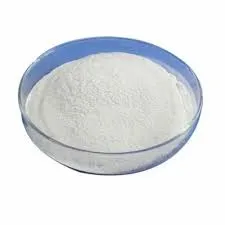
Oct . 15, 2024 02:45 Back to list
Synthesis and Applications of Hydroxyethyl Cellulose in Modern Industries
Synthesis of Hydroxyethyl Cellulose A Comprehensive Overview
Hydroxyethyl cellulose (HEC) is a non-ionic, water-soluble polymer derived from cellulose, a natural polymer found in the cell walls of plants. Its unique properties have made it an essential ingredient in various industrial applications, including pharmaceuticals, cosmetics, and food products. The synthesis of HEC involves the derivatization of cellulose, and understanding this process is crucial for producing high-quality HEC for diverse applications.
Raw Materials and Precursor Selection
The primary raw material for HEC synthesis is cellulose, which can be extracted from several sources, including cotton, wood pulp, and other plant materials. The purity and degree of polymerization of cellulose play a significant role in determining the final properties of HEC. Higher purity cellulose yields a more consistent product, essential for applications requiring specific viscosity and solubility characteristics.
Synthesis Process
The synthesis of hydroxyethyl cellulose usually follows a series of steps involving alkalization and etherification. The process typically begins with the activation of cellulose through treatment with an alkali, usually sodium hydroxide (NaOH). This treatment creates reactive hydroxy groups on the cellulose's polymer chains, facilitating the subsequent etherification reaction.
Once the cellulose is alkalized, the next step involves the introduction of ethylene oxide (EO) into the reaction system. Ethylene oxide is a key reagent that reacts with the activated cellulose to form hydroxyethyl groups. The reaction conditions—such as temperature, pressure, and the volume of ethylene oxide—are critical in determining the extent of substitution and consequently, the physical properties of HEC.
1. Alkalization By treating cellulose with sodium hydroxide, the hydroxyl groups on the cellulose chains become more reactive. This step is crucial as it sets the stage for the etherification reaction. 2. Etherification During this step, ethylene oxide is added to the alkali-activated cellulose. The reaction typically occurs at elevated temperatures (around 40-70 °C) and often under controlled conditions to manage the extent of substitution, affecting properties such as solubility and viscosity.
hydroxyethyl cellulose synthesis

3. Neutralization and Purification Following the etherification reaction, the product mixture is usually neutralized to remove excess alkali. The resulting HEC is then purified through methods such as centrifugation and filtration to remove unreacted materials and by-products.
Characterization of Hydroxyethyl Cellulose
After synthesis, hydroxyethyl cellulose needs to be characterized to evaluate its properties. Various techniques, such as nuclear magnetic resonance (NMR) spectroscopy, infrared (IR) spectroscopy, and rheological measurements, are employed to analyze structural features and functional properties.
The degree of substitution (DS) is a critical factor in determining the performance of HEC. A higher DS usually leads to increased solubility in water and improved viscosity. HEC with tailored DS values can be designed for specific applications, such as thickening agents in cosmetics or film-forming agents in pharmaceuticals.
Applications
Due to its excellent thickening, binding, and film-forming properties, HEC finds a wide variety of applications across different sectors. In the pharmaceutical industry, it is used as an excipient in drug formulations, enhancing solubility and bioavailability. The cosmetic industry utilizes HEC as a thickening agent in lotions and creams, providing a smooth texture and improved stability. In the food industry, it serves as a stabilizer and emulsifier, contributing to the texture and appearance of products.
Conclusion
The synthesis of hydroxyethyl cellulose is a crucial process that requires a thorough understanding of cellulose chemistry and reaction mechanisms. As industries continue to seek natural and biodegradable alternatives to synthetic polymers, the demand for HEC is anticipated to grow. The ability to tailor the synthesis parameters to meet specific industrial requirements will ensure the ongoing relevance of hydroxyethyl cellulose in modern applications. With continuous research and development, HEC promises to play an even more significant role in various fields, promoting sustainable practices and innovative solutions.
-
Versatile Hpmc Uses in Different Industries
NewsJun.19,2025
-
Redispersible Powder's Role in Enhancing Durability of Construction Products
NewsJun.19,2025
-
Hydroxyethyl Cellulose Applications Driving Green Industrial Processes
NewsJun.19,2025
-
Exploring Different Redispersible Polymer Powder
NewsJun.19,2025
-
Choosing the Right Mortar Bonding Agent
NewsJun.19,2025
-
Applications and Significance of China Hpmc in Modern Industries
NewsJun.19,2025







